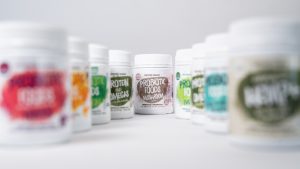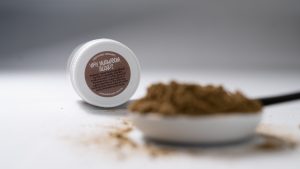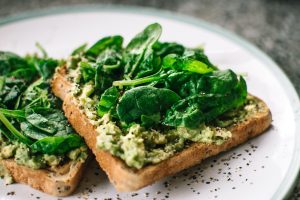Do probiotics get destroyed by stomach acid? If this was the case then what would be the point of consuming them, maybe it depends on the viability of the Probiotics themselves because over the years we have seen positive results from the use of food based probiotics.
One problem could be the use of probiotics on their own where refrigeration is required to support them where we cannot know if they were ever stored without refrigeration. In this case the probiotics could all be dead and therefore little benefit could be expected.
It seems probiotics need the support of food to be functional and on their own they are less likely to be of any benefit.
This is why we have always used food based probiotics where they come with their own food source which is known as prebiotic
The best thing about the process we use is that the product will survive 55 degrees Celsius, 12 percent alcohol., extreme cold and obviously stand a far higher chance of bypassing the acidic environment of the gut.
Could this be the reason we have seen so much success over the years with our food based probiotics.
Even better still is the evidence of the acid resistant bacteria we have in our Probiotic food range.
Oral prebiotics and probiotics face challenges when navigating the acidic environment of the stomach.
The stomach has a low pH (acidic) environment, which is crucial for the digestion of food and the destruction of potentially harmful microorganisms.
This acidic environment can potentially affect the viability and survival of probiotics, which are live microorganisms that confer health benefits when consumed in adequate amounts.
The survival of probiotics through the stomach acid depends on several factors:
- Strain Resistance: Some probiotic strains are naturally more resistant to stomach acid than others. For example, certain strains of Lactobacillus and Bifidobacterium are known to have higher acid resistance.Our prebiotic & probiotic range all include several probiotic strains, some of which are commonly used in the fermentation of probiotic foods. While specific acid resistance characteristics may vary among strains, here are a few insights into some of the strains we use:
- Lactobacillus Acidophilus: Known for its association with gut health, Lactobacillus acidophilus is generally considered to have some acid resistance, allowing it to survive in the stomach and reach the intestines.
- Lactobacillus Delbrueckii: This species includes various subspecies, and their acid resistance can vary. Research often focuses on specific strains within this species for their probiotic potential.
- Lactobacillus Caseii: Some strains of Lactobacillus casei have been studied for their resistance to stomach acid, but this can vary among different strains.
- Lactobacillus Bulgaricus: This strain is commonly used in the fermentation of yogurt. It generally has good acid tolerance, as it needs to survive in the acidic conditions of the stomach to reach the intestines.
- Lactobacillus Plantarum: Lactobacillus plantarum is known for its ability to survive in a wide range of conditions, including acidic environments. It has been used in various fermented foods.
- Bifidobacterium Bifidum: This bifidobacterial strain is commonly found in the human colon and is generally considered to have good acid resistance.
- Saccharomyces Boulardii: While not a bacterium but a yeast, Saccharomyces boulardii is known for its ability to survive in the stomach acid and has been studied for its potential probiotic benefits.
- Saccharomyces Cerevisiae: Another yeast strain, Saccharomyces cerevisiae, is often used in baking and brewing. While it may not be a traditional probiotic, it can survive in the digestive tract and has been studied for its potential health effects.

- Protective Mechanisms: Some probiotics have protective mechanisms, such as the ability to form spores or produce protective capsules, which can help them survive the harsh conditions of the stomach.Several probiotics have developed protective mechanisms to enhance their survival and efficacy. These protective mechanisms help the probiotic strains withstand the challenges of the acidic stomach environment and other harsh conditions. Here are some examples of strains we use:
-
- Lactobacillus reuteri: This probiotic strain is known for its ability to produce a biofilm, which serves as a protective shield around the bacteria. This biofilm can help the probiotics survive in the stomach and adhere to the intestinal lining.
- Lactobacillus plantarum: L. plantarum is recognised for its ability to adapt to various environmental conditions, including acidic environments. It produces protective proteins that contribute to its survival in the stomach and along the gastrointestinal tract.
- Bifidobacterium bifidum: Some strains of B. bifidum produce substances that help neutralize stomach acid, enhancing their chances of survival during passage through the stomach.
- Lactobacillus acidophilus NCFM: This strain of L. acidophilus has demonstrated resistance to bile salts and acidic conditions, making it more likely to survive in the gastrointestinal tract.
- Lactobacillus rhamnosus GG (LGG): LGG has been extensively studied and is known for its ability to survive in the acidic stomach environment. It also has adhesive properties that enable it to stick to the intestinal lining.
- Saccharomyces boulardii: While not a bacterium but a yeast, S. boulardii is resistant to stomach acid and bile, allowing it to reach the intestines alive. It also produces substances that may inhibit the growth of harmful microorganisms.
- Lactobacillus helveticus: This strain is used in the fermentation and exhibits good acid resistance. It produces peptides that may have health-promoting effects.

- Food or Supplements Formulation: Probiotics are often consumed in the form of supplements or added to food products. The formulation of these products, including the use of protective coatings or encapsulation, can enhance the survival of probiotics in the stomach. Combination of Probiotics with Prebiotics: Our formulations combine probiotics with prebiotics, which are substances that promote the growth and activity of beneficial bacteria. Prebiotics can serve as a source of nourishment for probiotics, supporting their survival and colonisation in the gut.

- Consumption: Taking probiotics on an empty stomach may expose them to higher acidity and reduce their survival. Consuming them with food may provide a buffer, as food can help neutralise stomach acid. Our probiotic comes in a food (prebiotic) so therefore this allows for them to be taken at any time to increase their survival.
Prebiotics, on the other hand, are non-digestible fibres that promote the growth and activity of beneficial bacteria in the gut. They are not live microorganisms and are not directly affected by stomach acid. Prebiotics can serve as food for probiotics, supporting their growth and activity in the gut.
Overall, the success of oral prebiotics and probiotics in navigating the stomach acid depends on the specific strains used, the formulation of the product, and individual variations in stomach acidity. We have had over 25 years of success stories with our prebiotic / probiotic blends. we even send out a 30 day self check questionnaire so you can record & see the results for yourself.




